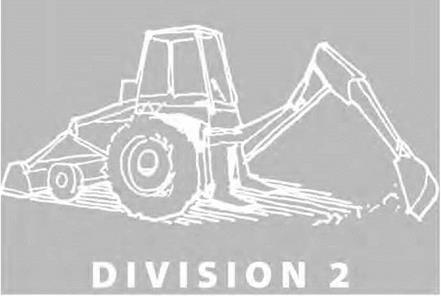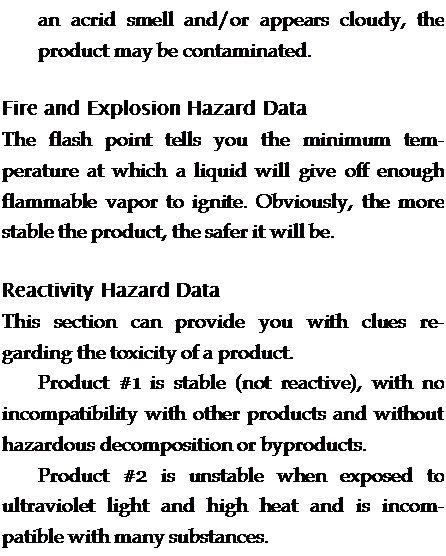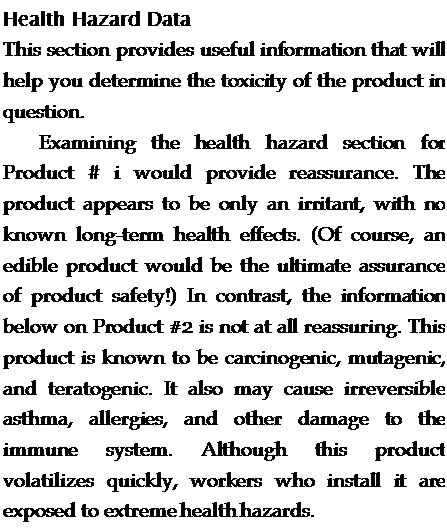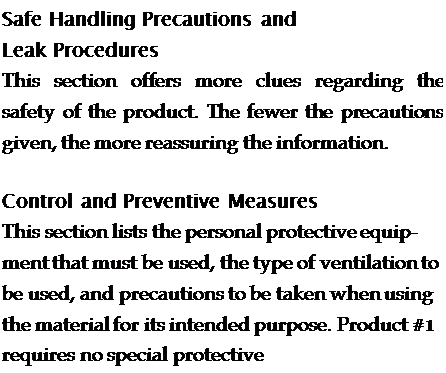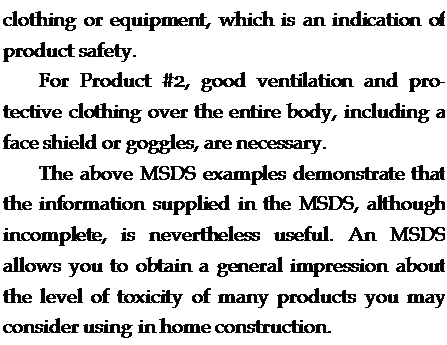Maintaining a Healthy Home
So the much anticipated day finally arrives. After all these years of dreaming and endless months of planning, your new, healthy home is ready to move into. Now, most people would think that’s the end of the story. Mission accomplished! Crack out the champagne! But it’s actually a very important new beginning and one that is sadly overlooked by many people. You see, your home is essentially a living organism, and in order for it to remain as healthy and vibrant as when you first move in, you will need a long-term commitmentto both occupy and maintain your home in a healthy manner.
Most people assume they already know how to do this. After all, they can arrange the furnishings; decorate or coordinate color schemes; clean their home and even make it smell nice; use the various appliances; and go to the nearest home improvement store if they need to fix something. Surely all this effort makes a home healthy? Unfortunately, most of the time it does not.
One of the most important factors that define
whethera home is healthy or not is indoorairqual – ity. If your new home has been built with health in mind, the indoor air quality will be free of the usual toxic chemical soup found in conventionally built new homes. However, it is possible to ruin a healthy home’s indoor air quality (even within minutes of moving in) if you aren’t aware of a few key facts.
Usually the first thing people do when they move into a new home is bring everything with them from their previous home, whether they need it or not. Let’s take a look at how some of the most common items can ruin your healthy home’s indoorair quality:
1. Old sofas and chairs made of polyurethane foam: The foam breaks down over time, releasing fine particulate matter into the air. This "dust" can contain chemicals such as toxic fire retardants and antimicrobials.
2. Furniture and household items impregnated with toxic cleaning products and syntheticfra-
• Bio-Wash: Environmentally friendly
household cleaners
• Bon Ami Polishing Cleanser: Nonchlorine all-purpose scouring powder
• Enviro Care: Environmentally preferred green cleaning products, some Green Seal certified
• Green: Personal care cleaner; contains fragrance
• KD Gold: All-purpose biodegradable natural soap
• Mystical: Odorless cleaner and deodorizer
• Naturally Yours: A complete line of “eco – nomological” household and personal cleaning products
• Spectracidal Disinfectant Agent: An EPA
approved nontoxic germicide
• Trewax Nature’s Orange: Scientific Certification Systems certified biodegradable cleaner/degreaser; contains citrus oils
• Trewax Neutral Cleaner: Scientific Certification Systems certified biodegradable all-purpose cleaner for no-wax floors, marble, terrazzo, pavers, etc. (not for unfinished wood floors)
• Wow!: Scientific Certification Systems certified biodegradable stainless steel cleaner
grance:These items will outgas chemicals into the air around them, often indefinitely.
3. Fragranced laundry products: These products may be loaded with petrochemicals and are frequently a major source of unhealthy indoor air quality. Not only do these products outgas in your laundry but as soon as you start laundering your clothes, towels, and bedding your whole house may also become polluted. I know many people love the smell of their dryer sheets, but just remember those are synthetic chemicals you are smelling, not real fragrance. Many of these chemicals have never been tested for their effects on human health.
4. Cleaning products: Like laundry products, many of these contain synthetic fragrances as well as a host of othertoxic chemicals that will outgas intotheairand leavean invisible chemical coating on all the surfaces with which they come in contact.
5. Pillows, duvets, and blankets: These are often full of dust mites and their feces, another indoor polluter and common allergen.
6. Old paints, adhesives, stains and finishes, garden and home pesticide products, car maintenance products, and a whole array of miscellaneous products people tend to store in the dark recesses of their cupboards and their garage: These products will frequently outgas even with their lids or caps in place and may pose a serious poisoning risk around small children and pets.
Moving into a new home often requires buying a few newthingstoo. Everything from mattressesto curtains to furniture made of particleboard now contains staggering amounts of chemicals, many known to cause everything from cancer to reproductive harm. All these products will outgas vigorously when new and ruin your home’s indoor air quality.
and protectant with no petroleum distillates
Common Household Products That Clean
The following common household products may also be used for cleaning:
• Baking soda cleans, deodorizes, scours, and softens water. It is noncorrosive and slightly abrasive and is effective for light cleaning.
• Borax cleans, deodorizes, disinfects, and softens water. It is also effective for light cleaning, for soiled laundry in the washing machine, and for preventing mold growth.
• Hydrogen peroxide (H202) is effective
in removing mold stains from nonporous surfaces. Purchase a 10 percent food-grade solution. (The solution most commonly sold off the shelf is only 3 percent.) Use protective gloves to apply. A 10 percent solution will bleach many types of surfaces. A 35 percent food-grade H202 is available through many health food stores. The container must be refrigerated and kept clean. The 35 percent solution will burn skin and must be carefully diluted before it can be safely used.
• Soap (as opposed to detergents) biodegrades safely and completely. It is an effective and gentle cleaner with many uses. For hands, dishes, laundry, and light cleaning,
As you can see, this combination of old and new household items can quickly ruin all your efforts to create a healthy home. The good news is that much ofthis damage can be prevented. Here’s some advice:
1. Replace old, worn furniture with new items made of natural materials, such as natural latex foam instead of polyurethane foam, and fabrics without flame retardants and other chemical treatments. If this isn’t within your budget, at least give your furniture a good vacuuming outdoors and if possible let it sit outside in fresh air and sunshine for a few hours. Wipe furniture down with either a damp microfiber cloth or a mild solution of acceptable soap and water to remove old cleaning product residues. Vinegar may also help remove certain alkaline residues such as soap films. It shouldn’t be mixed with the soap but should be used separately. Replace particleboard furniture with solid wood items free of toxic finishes and adhesives and whenever possible choose certified wood.
2. Replace laundry products with healthier, non- fragranced ones. If you want your laundry to smell good, the best remedy is to hang it outside in the sunshine for a while. Many laundry products simply are not needed.
3. Replace cleaning products with nontoxic ones or make your own from common kitchen ingredients such as baking soda or vinegar. (Don’t mix these two together since they are a mild alkali and an acid that will neutralize each other’s cleaning effectiveness.)
4. Microfiber cloths often eliminate the need for any cleaning product at all.
5. If you need a vacuum cleaner, make sure it’s a HEPA model. Conventional vacuum cleaners miss and recirculate about 70 percent of fine dust particles.
use the pure bar or soap flakes without perfume additives.
• TSP (trisodium phosphate) can be used according to the manufacturer’s instructions for grease removal. TSP is available in hardware stores. Surfaces cleaned with TSP should be neutralized with baking soda prior to the application of finishes. Fluids containing TSP should not be disposed of in septic systems or sewer systems because of their high phosphate content.
• Vodka is effective for dissolving alcohol – soluble finishes. Use a high-proof (high alcohol content) product.
• Washing soda (sodium carbonate) cuts grease, removes stains, disinfects, and soft
ens water. It is effective for washing heavily soiled laundry and for general cleaning.
• White vinegar cuts grease and removes lime deposits. A safe and useful all-purpose cleaning solution can be made from distilled white vinegar and plain water in a 50:50 ratio. For window cleaning, add five tablespoons of white vinegar to two cups of water. The solution should be placed in a glass spray bottle. Glass is preferred because plastics are known to release hormone-disrupting chemicals into bottle contents. Vinegar has been used to clean and control mold growth, but the thin film of residue left on the surface may supply nutrients for new growth.
|
6. Avoid fragranced air fresheners of all kinds.
7. As your budget allows, replace bedding with naturally dust mite resistant organic wool pillows, duvets, and blankets. Mattresses made of true natural latex are also dust mite resistant. Organic cotton pillowcases, sheets, and duvet covers are well worth the investment when you can afford them.
8. Develop the habit of reading labels. Don’t bring any product into your home that contains the words "warning,""danger," or "poison." If in doubt, err on the side of caution and find a safer option.
Over time, situations may arise that need special attention. If you plan todecorate, remodel, or make repairs, you will need to plan ahead to be sure to make the healthiest choices. In case of any unexpected problems, be sure to get them resolved immediately. For example, if you have a burst pipe,
dry the area out quickly, hiring qualified professionals, so there is no time for mold to grow.
Understanding how to live in and maintain your home for optimum health is as important as building your home correctly in the first place. With these basic ideas, you can protect the health of your whole family, including pets, and avoid the ever-increasing list of problems associated with living and sleeping in an unhealthy home. May you never know what you have prevented!
Athena Thompson is a certified Building Biology Practitioner. A natural health specialist for over 20 years, she focuses on environmental health, specializing in children’s health issues. She is the author of the popular book Homes That Heal (and those that don’t): How Your Home May be Harming Your Family’s Health and cofounder of Humabuilt — Healthy Building Solutions.
Once construction is complete and before a home is handed over from the contractor to the owner, various tests should be run on the building. This testing provides the opportunity for tuning and adjusting various systems and either assures that the building is operating as intended or detects errors and omissions in the building system so that the contractor or appropriate subcontractor can correct them prior to occupation. This also provides an opportunity for the contractor to do a walk-through with the owner to explain how the systems work and how the owner needs to maintain and monitor them.
Throughout this book we suggest various tests that the owner may wish to include as part of the contract, to be conducted either by the contractor and his subcontractors or by a third party. Some of these are:
• testing for air leakage in the HVAC system
• pressure balancing of HVAC or start-up and balancing of radiant floor heating
• cycling all appliances
• testing for magnetic fields
• testing air and water quality
• blower door tests to determine if there is sufficient air tightness in the finished building
We also suggest that the owner obtain various documents from the contractor including:
• photo documentation of the building process showing location of utility trenches, electrical wiring, plumbing piping, blocking in the walls, and any other pertinent information that has been covered up in the finished home
• an owner’s manual containing equipment, material, and labor warranties, schedules for required maintenance, contact numbers for major subcontractors, and certificates of inspection and occupancy
• “as-built” drawings, which are marked-up copies of the original drawings, and specifications indicating any changes that have been made in the course of construction and locating any pertinent information that was not on the original documents (refer to the section on occupant education in the Overview chapter)
Ashford, Nicholas and Claudia Miller. Chemical Exposures: Low Levels and High Stakes. 2nd ed., John Wiley and Sons, 1998. A scientific discussion of the mechanisms underlying chemical sensitivities.
Bower, Lynn Marie. The Healthy Household. Healthy House Institute, 1995. Contains a useful section on household cleansers.
Dadd, Debra Lynn. Nontoxic, Natural and Earth – wise. J. P. Tarcher, 1990. Has a good selection of alternatives to toxic cleaning products.
Lab Safety Supply, Inc. Preparing, Understanding, and Using Material Safety Data Sheets. This booklet can be obtained from Lab Safety Supply, Inc. at 800-356-0783.
McDonough, William and Michael Braungart. Cradle to Cradle: Remaking the Way We Make Things. North Point Press, 2002. Described on their website as “a manifesto calling for the transformation of human industry through ecologically intelligent design.”
Wilson, Cynthia. Chemical Exposure and Human Health. McFarland, 1993. A reference to 314 chemicals, with a guide to symptoms. We use this handy guide to supplement information from the MSDS.
